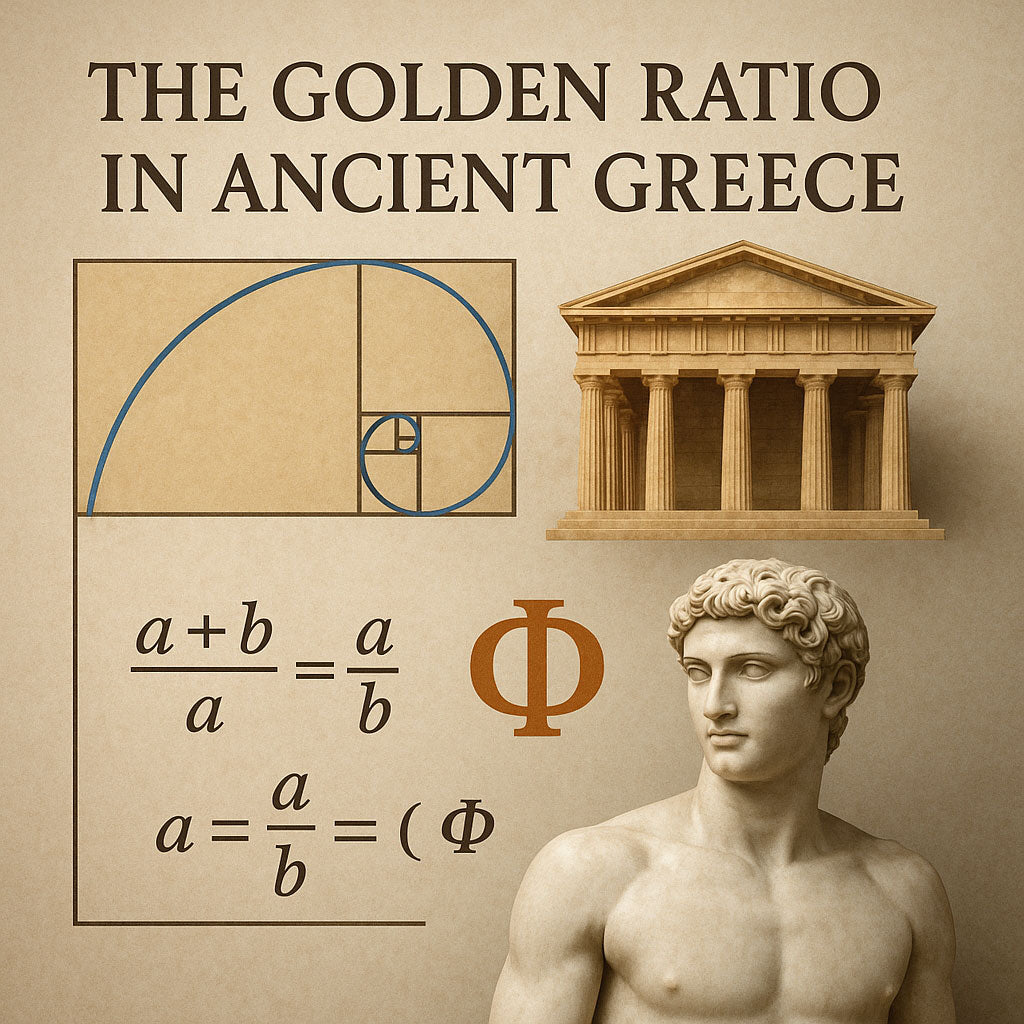The Golden Ratio in Ancient Greece: Beauty in Numbers
Learn how a mathematical ratio known as the Golden Ratio shaped the design, art, and architecture of Ancient Greece, influencing beauty standards for centuries.
📌 Table of Contents
- What Is the Golden Ratio?
- Why Did the Greeks Love the Golden Ratio?
- The Golden Ratio in Greek Architecture
- Golden Ratio in Ancient Greek Art and Sculpture
- Is the Golden Ratio in Greek Design Just a Coincidence?
- Why the Golden Ratio Still Matters Today
What Is the Golden Ratio?
The Golden Ratio, often written as 1.618 or Phi (Φ), is a unique number found in mathematics, nature, and visual design.
Mathematically, it looks like this:
(a + b) / a = a / b = Φ (approximately 1.618)
This ratio creates balance, harmony, and beauty — all things that Ancient Greek culture deeply valued.
Why Did the Greeks Love the Golden Ratio?
The Ancient Greeks believed that mathematics revealed universal truths. To them:
- Beauty could be measured with numbers
- Balance and proportion were divine principles
- The Golden Ratio combined philosophy, math, and aesthetics
The Golden Ratio in Greek Architecture
The Parthenon and the Golden Ratio
The Parthenon in Athens is believed to be designed using the Golden Ratio:
- Its facade and column layout reflect golden proportions
- It’s one of the most iconic examples of harmony in ancient design
Other Structures
Temples, amphitheaters, and monuments used symmetry and golden rectangles to achieve visual perfection. These mathematical design choices created lasting architectural beauty.
Golden Ratio in Ancient Greek Art and Sculpture
Greek sculptors aimed to create the "perfect" human form using mathematical systems.
Polykleitos and the Canon
Polykleitos developed the “Canon” — a set of rules for sculpting the ideal body. His work shows:
- Golden ratios in limb length and facial structure
- Measured beauty, not just imagined
Is the Golden Ratio in Greek Design Just a Coincidence?
Some modern researchers question whether the Greeks used Φ on purpose. Skeptics argue:
- Some ratios may have been added in hindsight
- Not all structures follow Phi exactly
Still, the patterns appear too frequently to ignore. Intentional or not, Greek works reflect mathematical harmony.
Why the Golden Ratio Still Matters Today
Today, the Golden Ratio is everywhere:
- In logos (Apple, Twitter, Pepsi)
- In modern architecture and interior design
- In photography, visual art, and branding
- In nature — from seashells to spiral galaxies
The golden ratio continues to shape how we view beauty, thanks to its ancient roots.
Final Thought
The Golden Ratio in Ancient Greece wasn’t just a number. It was an idea — a way to bring math, beauty, and truth together.
And even today, that idea still inspires how we build, create, and see the world.


